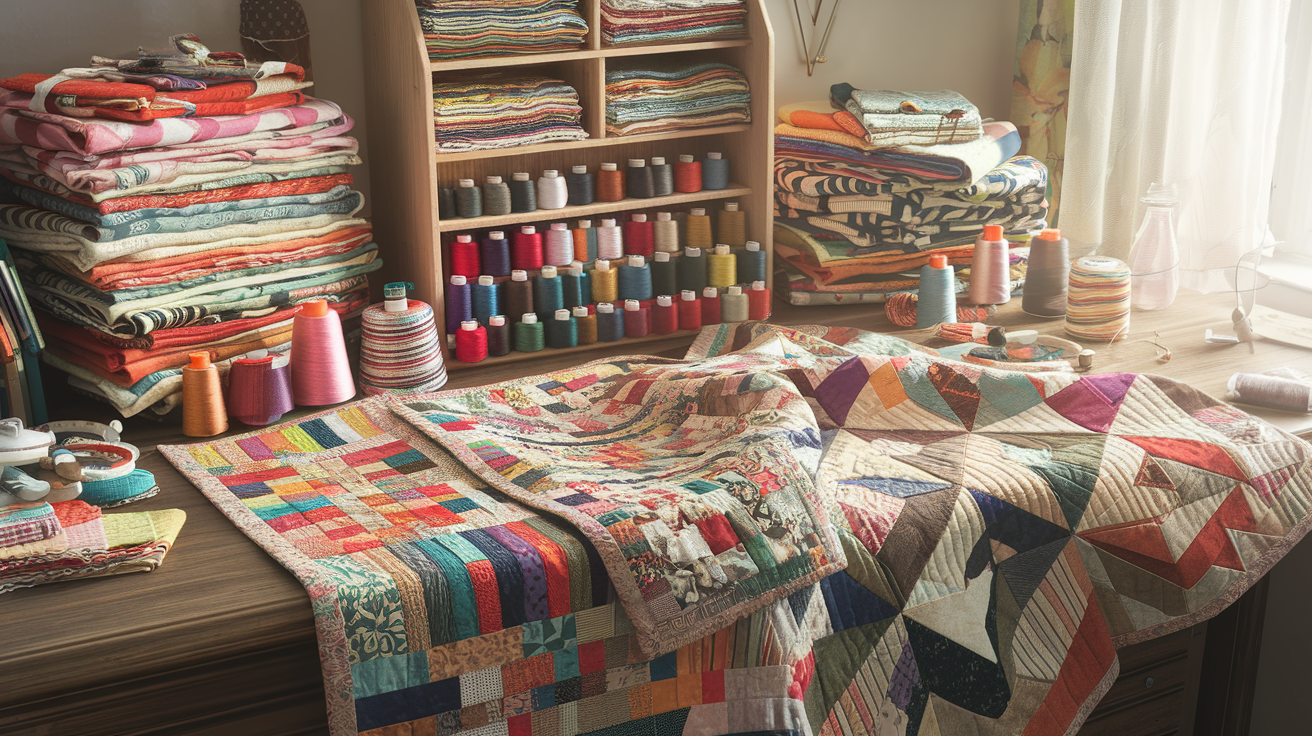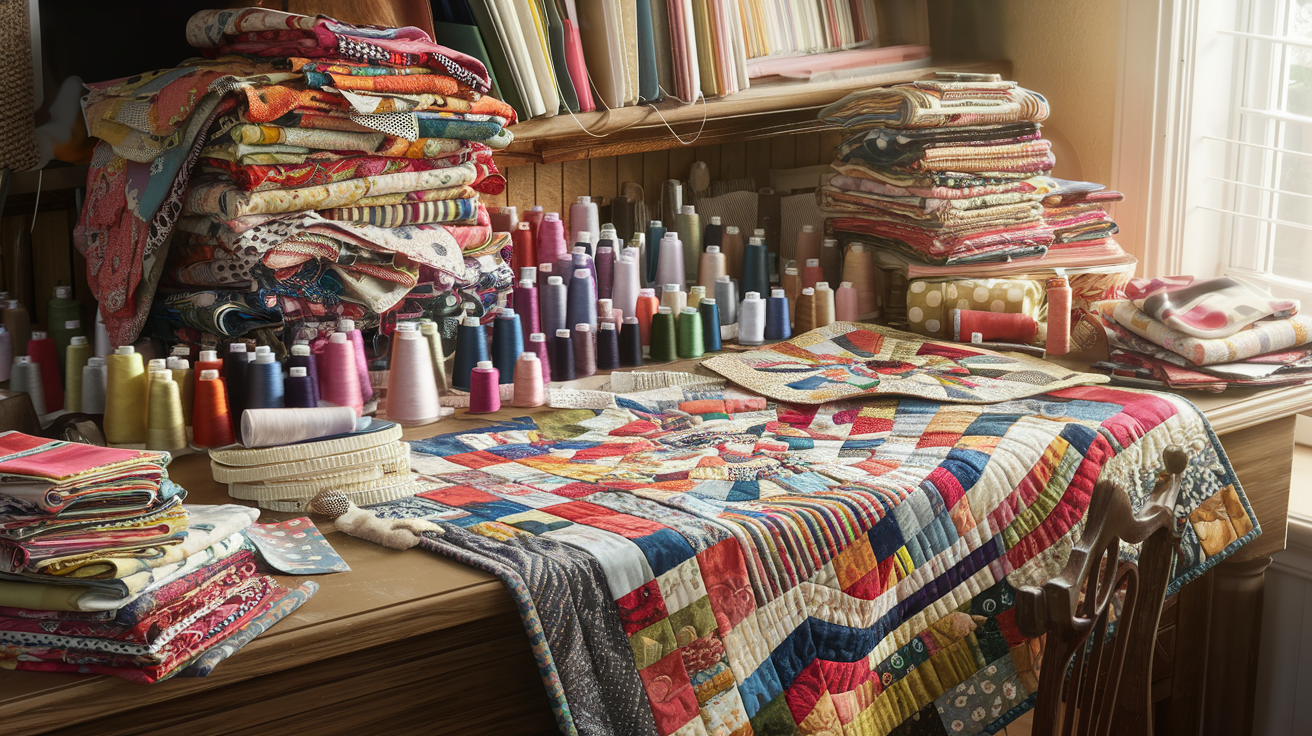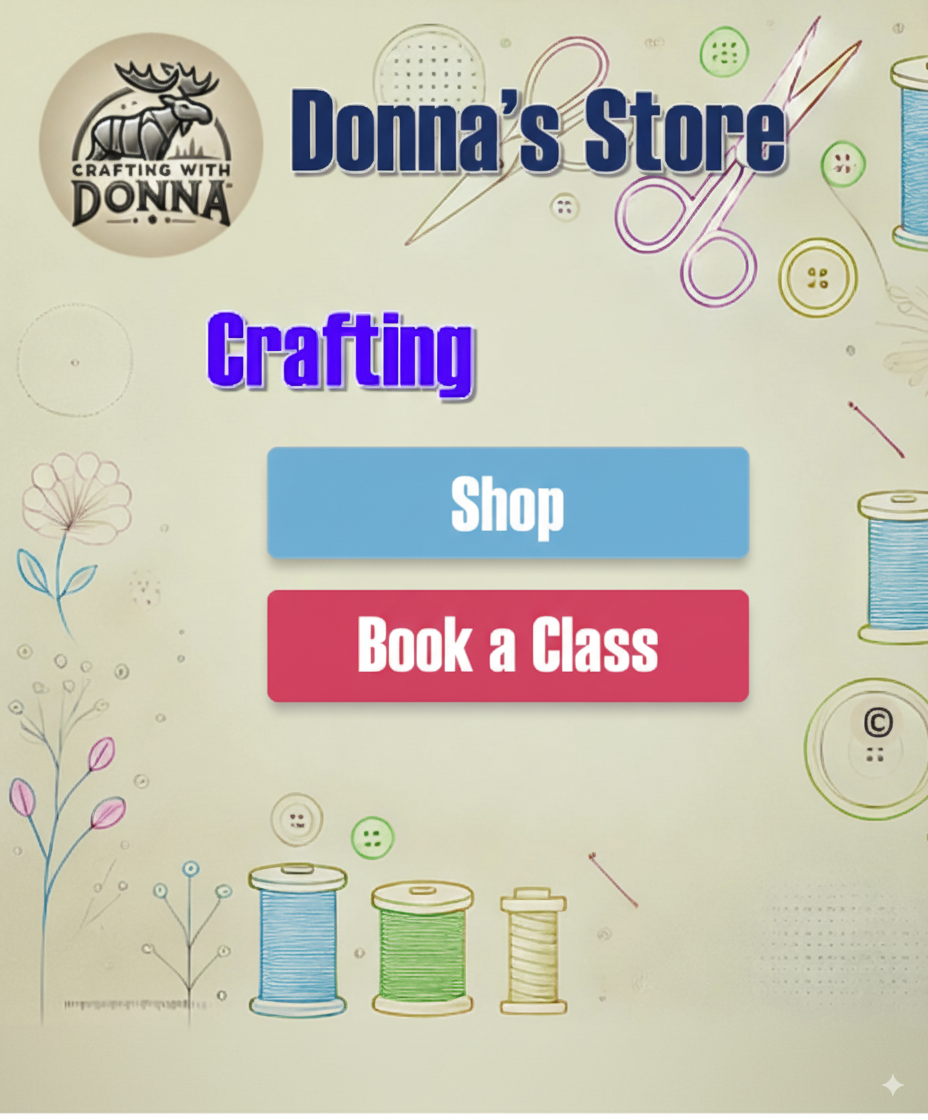Beginner Quilting Guide Mastering The Basics

Embarking on your quilting journey opens a world of fabric art, where transforming fabric into functional art is both creative and achievable. At the heart of each first quilt project, you’ll find quilting essentials like rotary cutters, quilting rulers, and quality thread.
Whether your style leans toward traditional patchwork or bold textile crafts, layering fabric into a soft quilt sandwich creates functional art with every stitch.
Pressing seams and carefully cutting fabric lay the foundation for craft mastery, helping novice quilters embrace patterns and techniques step by step.
Quilting Essentials: What Do You Need?
Building on foundational techniques, this section guides you with the necessary quilting tools for your creative process.
Mastering quilting tools starts with reliable cutting essentials—choose a sharp rotary cutter with a self-healing mat for safe cutting and accurate shapes. Quilting scissors and a sturdy ruler ensure each piece fits together with precise measurements, streamlining your first quilt project.
Quality thread, long pins, and strong quilting needles are vital for piecing fabric and securing layers as you assemble your quilt sandwich. Add an iron and ironing board for pressing seams accurately, plus batting types like cotton for a soft, even finish.
A sewing machine, while optional, boosts efficiency for sewing projects and advances your craft mastery.
Fabric preparation, including pre-washing and pressing, ensures a smooth start to a great crafting skills development.

Fabric Selection Tips for Beginners
Quilting essentials like fabric selection tips can greatly influence the success of your first quilt project. For new quilters, 100% quilting cotton stands out thanks to its stable weave and easy handling, making foundational techniques such as fabric cutting and piecing fabric straightforward and frustration-free.
When exploring quilting fabric, always check for a tight weave; this indicates durability and less fraying, which are important for piecing and pressing seams accurately as part of your craft mastery.
To protect your creative quilting from shrinkage and color bleed, pre-wash fabrics before cutting.
This thoughtful step in fabric preparation ensures that all fabric layers remain true to size, maintaining vibrancy and integrity throughout your quilting journey. As you transition to simple quilt patterns, these fabric choices create a solid base for creative process and harmonious fabrics in your quilt sandwich assembly.
Many novice quilters find success by adhering to these foundational techniques.
Beginner Quilt Patterns Simple Starts
Beginner quilt patterns that emphasize simple construction methods pave the way for novice quilters to develop their crafting skills with confidence. Easy quilting projects benefit from blocks made of basic geometric shapes—such as squares and rectangles—since these are the most forgiving when learning to maintain accurate seam allowance and practicing foundational techniques.
Patchwork, a classic in quilting basics, uses uniform squares to build confidence and yield quick, visually appealing results.
For those seeking variety, simple strip quilts using rectangles promote functional art and reinforce important skills in fabric joining and pressing seams accurately.
As you progress, these simple quilt patterns offer step-by-step instructions that facilitate understanding of quilt anatomy and prepare you for more complex piecing techniques and quilt construction. This approach simplifies your quilting journey.
Beginner quilt patterns should focus on easy-to-manage blocks for a smoother start.
Prioritizing patterns using squares or rectangles simplifies the cutting and piecing process significantly for those new to textile crafts. These shapes are forgiving, allowing ample room for learning accurate seam allowance and foundational techniques.
Choosing simple quilt patterns using these basic geometric forms will give you a better chance at successful quilt construction.
Choosing Simple Blocks
Focus on patterns utilizing squares or rectangles for your first quilt project.
These shapes are the most accessible for novice quilters.
They offer a straightforward path to mastering fabric cutting and piecing fabric, building confidence in your quilting journey and developing essential crafting skills. These forms are fundamental to patchwork and many other simple quilt patterns.
Pattern Recommendations
For those starting their quilting journey, patterns featuring squares and rectangles are highly recommended.
They form the backbone of many beginner quilt patterns and allow for practice in creating accurate seam allowance. These blocks are excellent for learning essential quilting techniques and building your quilting knowledge, leading to a more enjoyable creative quilting experience and a beautiful functional art piece by the end of your first quilt project.
- 100% quilting cotton is recommended for beginners due to its stable weave and ease of handling, making fabric cutting and piecing straightforward.
- Pre-washing fabrics is a crucial preparation step to prevent shrinkage and color bleed, ensuring fabric layers maintain their size and vibrancy.
- Beginner quilt patterns that utilize basic geometric shapes like squares and rectangles are ideal for learning accurate seam allowance and foundational quilting techniques.
- Patchwork, using uniform squares, is a classic technique that builds confidence and yields quick, visually appealing results for novice quilters.
Piecing Fabric Accurately Step by Step
Quilting for beginners successfully commences with mastering piecing fabric, employing foundational techniques for precise joins and professional results. Fabric preparation is of utmost importance—pre-washing and pressing fabric minimizes stretching or distortion.
Patching and piecing involves placing two pieces right sides together, carefully matching edges, and sewing with a consistent seam allowance.
Utilizing a 1/4 inch foot promotes uniformity across all blocks.
Pressing seams accurately with a hot iron ensures your quilt top remains flat and reduces bulk. Consistent practice of these step-by-step instructions will rapidly build confidence for your first quilt project as you embark on your quilting journey.
Quilt Sandwich Assembly: Layering Fabric
Quilt sandwich assembly connects the pieced top to the final quilt structure, stabilizing all components.
Layering fabric means stacking the completed quilt top, the chosen batting types for warmth, and a backing fabric, ensuring each layer lies smooth and flat. Basting methods, such as using safety pins, spray adhesive, or hand stitching, temporarily secure the layers together prior to quilting.
Quilting essentials include making sure the backing and batting extend slightly beyond the top, allowing for safe cutting and movement during stitching.
This initial step in the beginner quilting guide secures all fabric layers, preparing your project for precise quilting stitches, leading to successful finishing and enduring results.
Key Takeaways for Beginner Quilting
- Pre-washing and pressing fabric is crucial to prevent stretching and distortion during piecing.
- Using a 1/4 inch foot ensures consistent seam allowances for uniform blocks.
- Properly pressing seams flat helps reduce bulk and maintain a smooth quilt top.
- Basting methods like safety pins or spray adhesive are used to temporarily secure the quilt layers before quilting.
Pressing Seams Accurately: Key to a Polished Quilt
Pressing seams accurately is the backbone of any well-constructed quilt, directly impacting both the flatness and the professional finish of your quilt blocks. In quilting essentials, neatness in quilt construction isn’t just visually pleasing—it ensures every seam allowance lies crisp, integrates seamlessly, and helps blocks fit together with precision.
Quilting journey: When you press seams open or to one side, the thread melds into the fabric, reducing bulk and giving your quilt top a smooth, polished look for easier piecing fabric and quilt sandwich assembly.
Quilting techniques: Whether you’re following beginner quilt patterns or tackling creative quilting projects, consistent pressing prevents puckering and misaligned corners, making each layer come together as intended.
Fabric art: Before you advance to the next step of binding a quilt tutorial, make pressing a practiced habit to elevate your results. Textile crafts: This foundational technique ensures a professional appearance. Craft mastery: Proper pressing significantly contributes to the overall aesthetic. Quilting appeal: It makes a noticeable difference in the final product.
Finishing a Quilt Binding Tutorial for a Professional Touch
Finishing a quilt begins with creating neat, durable binding strips that frame your patchwork for lasting appeal.
Quilting journey: In binding a quilt tutorial, preparing the binding means carefully selecting and cutting your fabric, ensuring each strip maintains a consistent width—an essential step that separates novice quilters from accomplished crafters. Fabric preparation: Layering fabric accurately and aligning the binding with a proper seam allowance prevent waviness or unevenness around the quilt’s edge.
Quilting methods: Sewing machine quilting or hand quilting techniques can be used to secure the free edge of the binding to the quilt’s back, with invisible stitches recommended for a truly finished look.
Quilting techniques: Mastering the join at the start and end, especially with sharp corners, gives your quilt a clean, professional edge.
Transforming fabric: This thoughtful attention to binding is the final touch that brings harmony and polish to your textile crafts. Crafting skills: Achieving a neat finish on the binding enhances the quilt’s presentation.
Quilting appeal: It provides a polished edge to your creation. Sewing projects: This final step is most rewarding.
| Quilting Essential | Impact on Quilt Finish | Key Technique |
|---|---|---|
| Accurate Seam Pressing | Ensures flatness, professional finish, and precise block fitting. | Pressing seams open or to one side to reduce bulk. |
| Neat Binding Strips | Frames patchwork for lasting appeal and a polished edge. | Careful fabric selection and consistent strip width. |
| Consistent Seam Allowance | Prevents waviness and unevenness around the quilt’s edge. | Layering fabric accurately and aligning binding precisely. |
| Mastering Corner Joins | Gives the quilt a clean, professional edge. | Attention to detail when joining binding at corners. |
Your First Quilt Project Journey
Embarking on your first quilt project is an exciting exploration into fabric art, a craft that beautifully transforms layers of fabric into functional art, offering a clear and supportive path from fabric selection to the final stitch. As you begin this creative quilting endeavor, approach each step as a valuable lesson—each stitch, each press, and every block assembled deepens your quilting knowledge and strengthens your crafting skills.
Piecing fabric together and maintaining a consistent seam allowance helps novice quilters master quilting basics while building confidence with every completed block or row, reinforcing the satisfaction of completing this handmade item.
Documenting your progress—whether by photographing stages, keeping notes, or sharing online—serves as a tangible reminder of how far your quilting journey has come, fueling motivation.
The satisfaction that comes from finishing a handmade quilt goes beyond the final product; it’s found in the problem-solving, learning, and creative joy that define each quilt project. Troubleshooting quilting challenges and reviewing the evolution of your first quilt project can be just as rewarding as the quilt itself, showcasing your growing craft mastery.
Getting Started: Quilting Essentials and Fabric Selection
To commence your textile crafts adventure, ensure you have your quilting essentials readily available to support your creative process. Selecting harmonious fabrics for your first quilt project is a delightful introduction to fabric selection tips, where choosing colors that blend or contrast as desired sets the stage for beautiful outcomes.
This initial phase involves proper fabric preparation, a foundational technique that ensures your materials are ready for cutting and stitching, minimizing future issues.
Carefully consider your intended design and the overall aesthetic, as harmonizing colors and patterns contributes significantly to the visual appeal of your work.
From Fabric to Quilt Top: Cutting, Piecing, and Pressing
Precise cutting and careful piecing are foundational techniques for transforming fabric into a cohesive quilt top. Practicing safe cutting protocols, especially with tools like a rotary cutter and self-healing mat, is paramount for both accuracy and safety during your fabric cutting endeavors.
Joining fabric pieces with a consistent ¼-inch seam allowance is a key step in piecing fabric, and properly pressing seams accurately after each joining stage helps reduce bulk and ensures your blocks lay flat, which is essential for accurate alignment. This methodical approach to patchwork builds confidence and skill for novice quilters.
The Quilt Sandwich: Layering for Quilting
Assembling the quilt sandwich involves layering your quilt top, batting, and backing fabric, providing the structure for your stitch work.
Choosing appropriate batting types for the middle layer impacts the quilt’s warmth and drape, and properly basting these layers together ensures stability before you begin the actual quilting.
This careful arrangement of fabric layers is a crucial step in quilt construction.
Quilting and Finishing: Bringing Your Creation to Life
Whether you opt for sewing machine quilting or explore rewarding hand quilting techniques, the act of quilting stitches secures all the fabric layers together, transforming the flat layers into a tactile piece of functional art.
After quilting, the final stages involve finishing a quilt, often through a binding a quilt tutorial, which creates a clean and durable edge. This completes your first quilt project, a significant achievement in your ongoing quilting journey, offering immense satisfaction from this creative process and signaling the start of your own personal quilting appeal.
Key Takeaways for Your First Quilt Project
- Approaching each step in quilting, from fabric selection to the final stitch, deepens quilting knowledge and strengthens crafting skills for novice quilters.
- Consistent seam allowance, precise cutting, and proper pressing are foundational techniques for successful fabric piecing and accurate block assembly.
- The quilt sandwich construction involves layering the quilt top, batting, and backing, which requires proper basting for stability before quilting.
- Finishing a quilt, often with binding, secures all layers and creates a clean edge, marking the completion of a significant creative achievement.




